Childhood immunization schedule 2022: The complete list of vaccinations recommended for children based on their age, as recommended by the CDC

The Centers for Disease Control and Prevention (CDC) issues recommended immunization regimens for children each year. What use do timetables serve? Because vaccination timing and spacing are critical for the best potential protection against avoidable illnesses.
Children’s immune systems are more susceptible to sickness and disease, and vaccination regimens are carefully planned with this in mind by leading infectious disease specialists and physicians. What is the objective? Protect children as early and safely as possible against vaccine-preventable illnesses.
The immunization schedule for 2022 is similar to that for 2020, although certain adjustments and clarifications have been made. The next sections discuss the number of vaccinations recommended for children and when they should be given, an overview of the 2022 schedule adjustments, and a breakdown of vaccine recommendations by age group. Additionally, we address concerns about COVID-19 vaccinations for children and adolescents.
How many vaccinations do children receive if their vaccination schedule is adhered to?
Currently, 16 immunizations are recommended for children from birth to age 18 – some of which require several doses at specified ages and intervals. Vaccines that are recommended include:
This suggested schedule of vaccinations may vary according to your location, your child’s health, the sort of immunization, and the vaccinations available.
Certain vaccinations may be administered as part of a combination vaccine, resulting in fewer doses for the youngster. Consult your doctor to determine which immunizations your children require.
Birth:
HepB: Vaccine against Hepatitis B.
Ideally, the first dosage should be administered within 24 hours of birth, although children who have not been vaccinated previously can get it at any age. Certain low birth weight children who are born prematurely may develop it at one month or upon departure from the hospital.
Between 1 and 2 months:
HepB: The second dose should be administered one to two months following the initial dose.
Month: 2
DTaP – stands for diphtheria, tetanus, and acellular pertussis.
Hib -vaccination against Haemophilus influenzae type b
IPV – poliovirus vaccine inactivated
PCV – is an acronym for pneumococcal conjugate vaccination.
RV – Vaccine against rotavirus
Month:4
DTaP
Hib
IPV
PCV
RV
Month: 6
This third dose of DTaP Hib may be necessary, depending on the brand of vaccine used in prior Hib vaccinations.
PCV RV: Depending on the brand of vaccine used in prior RV vaccines, this third dosage may be required.
6 months and annually
Influenza (Flu) vaccination is advised annually for children 6 months of age and older:
Children under the age of nine who receive the flu vaccination for the first time (or who have had just one dose before July 2019) will receive it in two separate doses at least one month apart.
Children under the age of 9 who have previously received at least two doses of flu vaccination (during the same or different seasons) will only require one dose.
Children above the age of 9 require only one dosage.
The vaccination is administered either needle injection (the flu shot) or nasal spray.. Whichever medication to take will be recommended by your doctor based on your child’s age and overall health. The nasal spray is intended for healthy individuals aged 2–49 years. Individuals with weakened immune systems or certain medical disorders (such as asthma), as well as pregnant women, should avoid receiving the nasal spray vaccination.
Month: 16 to 18
HepB
IPV
Month: 12 to 15
Hib
MMR – Vaccine against measles, mumps, and rubella
PCV
Chickenpox (Varicella)
Month: 12 to 23
HepA: Vaccine against hepatitis A; administered in two doses at least six months apart.
Month: 15 to18
DTaP
4–6 years old
DTaP
MMR
IPV
Varicella
11–12 years of age
HPV: Human papillomavirus vaccination administered in two injections over a six- to twelve-month period. It can be administered as early as age nine. It is administered in three doses over six months to adolescents and young adults (ages 15–26 in both females and boys). It is suggested for girls and boys alike to avoid genital warts and some forms of cancer.
Tdap: Booster for tetanus, diphtheria, and pertussis. Additionally, it is suggested for each pregnancy a woman has.
MenACWY: Vaccine against meningococcal bacteria types A, C, W, and Y. At the age of 16, a booster dosage is recommended.
16–18 years of age
MenB: Meningococcal meningococcal vaccination. Protects against meningococcal type B bacteria. Children and adolescents may receive the MenB vaccination in two or three doses, depending on the brand. Unlike the meningococcal conjugate vaccination, which is recommended, youth, their parents, and their doctor decide to get the MenB vaccine.
Particular conditions
The HepA vaccine can be administered to infants as young as six months of age if they will be travelling to an area where hepatitis A is prevalent (they will still need routine vaccination after their first birthday). It is also advised for older children who have not previously received it.
MMR vaccinations can be administered to infants as early as six months of age if they will be travelling overseas. These children should continue to receive the usual normal doses at 12–15 months and 4–6 years of age, although they may receive the second dose as early as four weeks after the first if they will continue to travel and are at risk.
The flu vaccination is especially critical for children who are at risk of developing health complications from the virus. Children under the age of five and people with chronic medical illnesses such as asthma, heart difficulties, sickle cell disease, diabetes, or HIV are considered high-risk populations.
Pneumococcal vaccinations can be administered to older children (age 2) who have immune system problems such as asplenia or HIV infection, or who have additional illnesses such as a cochlear implant, chronic heart disease, or chronic lung disease.
Meningococcal vaccinations can be administered to children as young as 8 weeks old (depending on the vaccine brand) who are at risk of contracting a meningococcal illness, such as meningitis. This covers youngsters who have been diagnosed with certain immunological diseases. Children who reside in (or will travel to) countries where meningitis is prevalent or where an epidemic is occurring should also receive the vaccination.
Are COVID-19 immunizations indicated for children and teenagers?
While the CDC has not included COVID-19 vaccines in their official children or adolescent immunizations schedules, they’re advising all eligible kids, teenagers and adults to get vaccinated as soon as they can.
What should I do if my child is behind on their vaccine schedule?
Don’t worry. There are catch-up guidelines in place. But since each vaccination has its standards, discuss with your child’s doctor to establish a plan for getting back on schedule.
In light of the recent COVID-19 epidemic, if there are any reasons why I should not vaccinate my child?
Yes. There are occasions when certain youngsters should not get particular immunizations or they should wait. For example, if your kid has any serious, life-threatening allergies, they’ve had an adverse response after a prior dose of vaccinations, or they’re moderately or severely unwell, their doctor may recommend avoiding getting or postponing a certain vaccination.
When it concerns the COVID-19 pandemic, you don’t need to delay the vaccines or treatment your kid needs – that is unless of course you, your child or someone in your home is suffering COVID-19 symptoms.
While remaining on schedule with all vaccines is vital, ensuring your child obtains their yearly flu vaccine will be especially crucial this year. As the pandemic persists, so too will the large numbers of hours we spend at home and inside – where flu viruses may survive through relatively cool winter weather.
